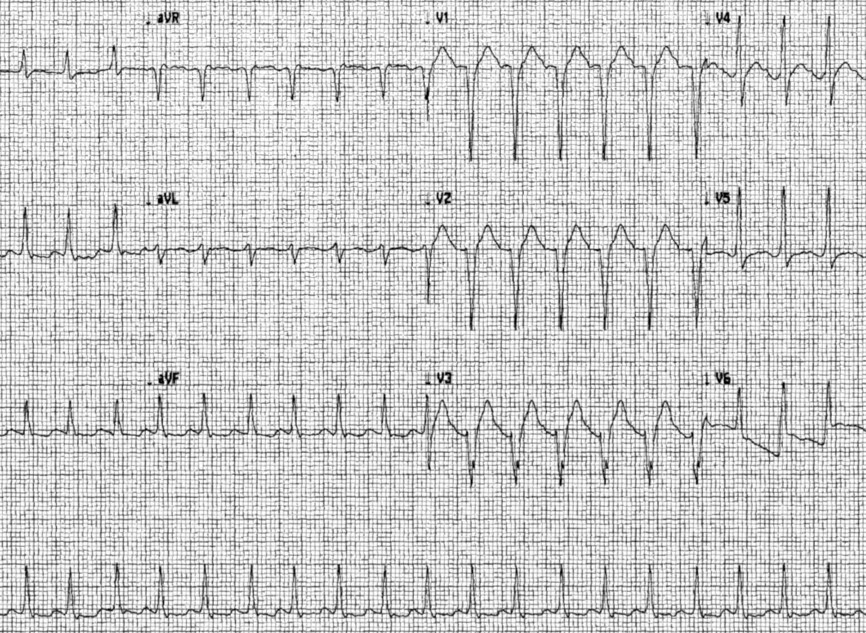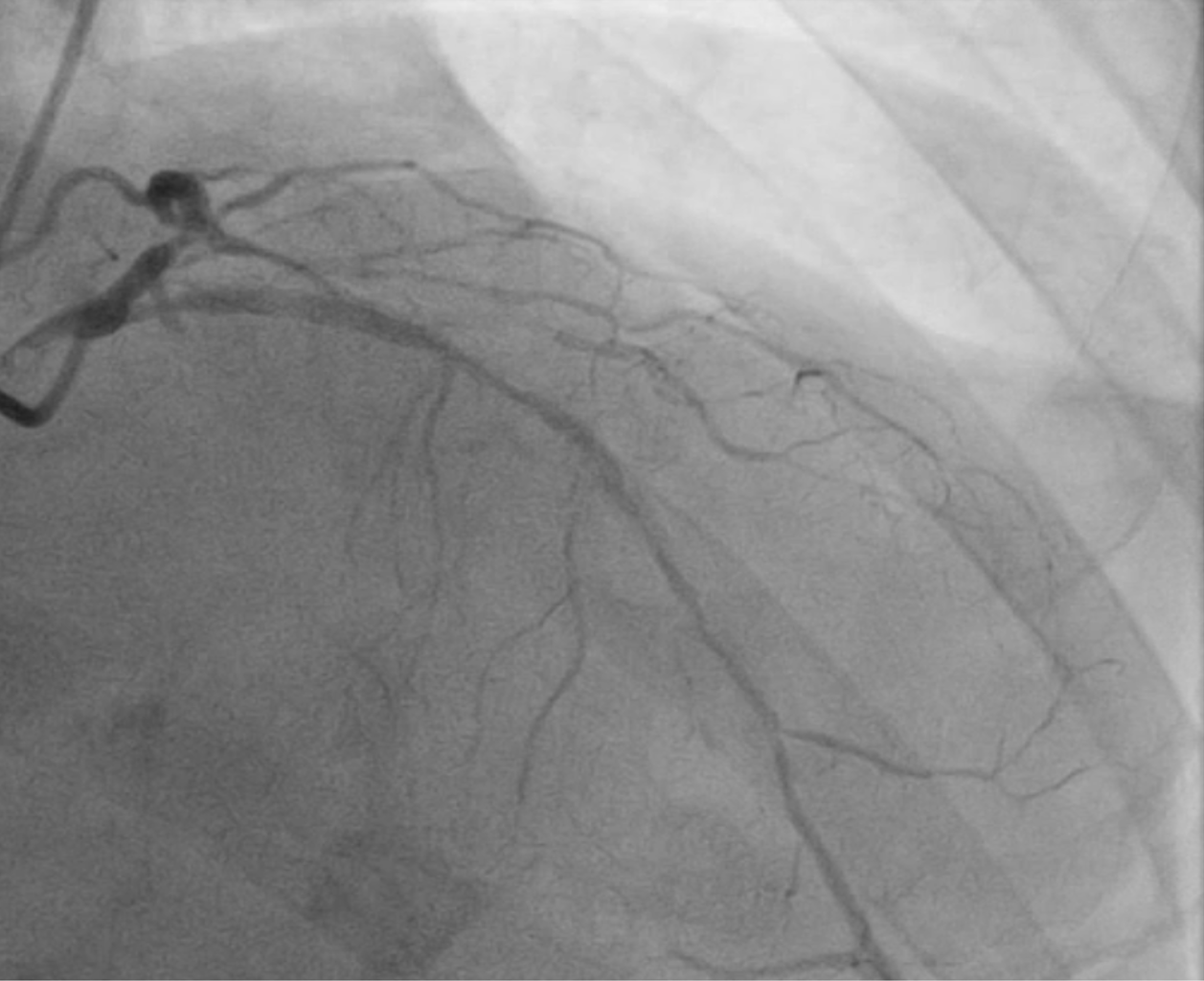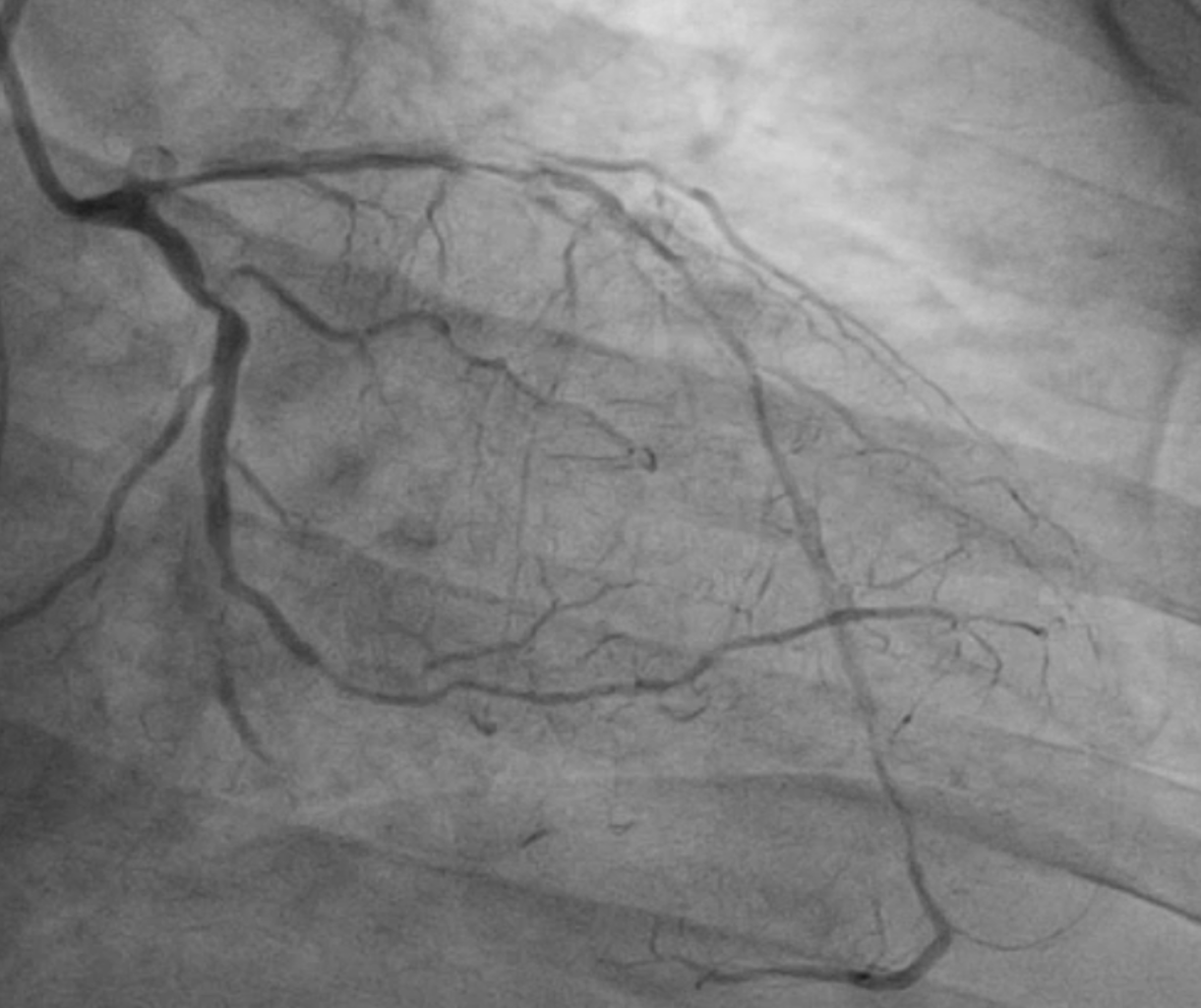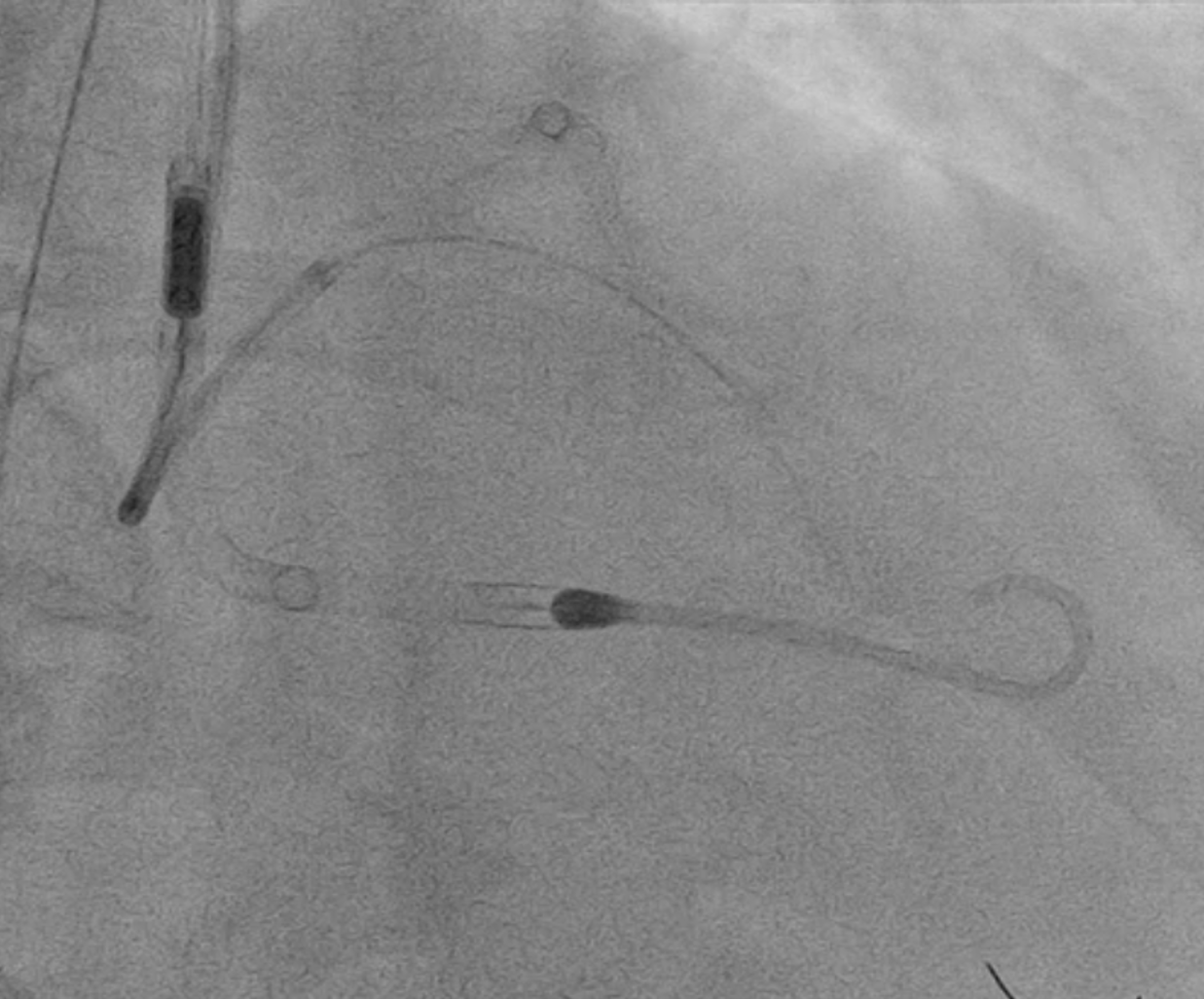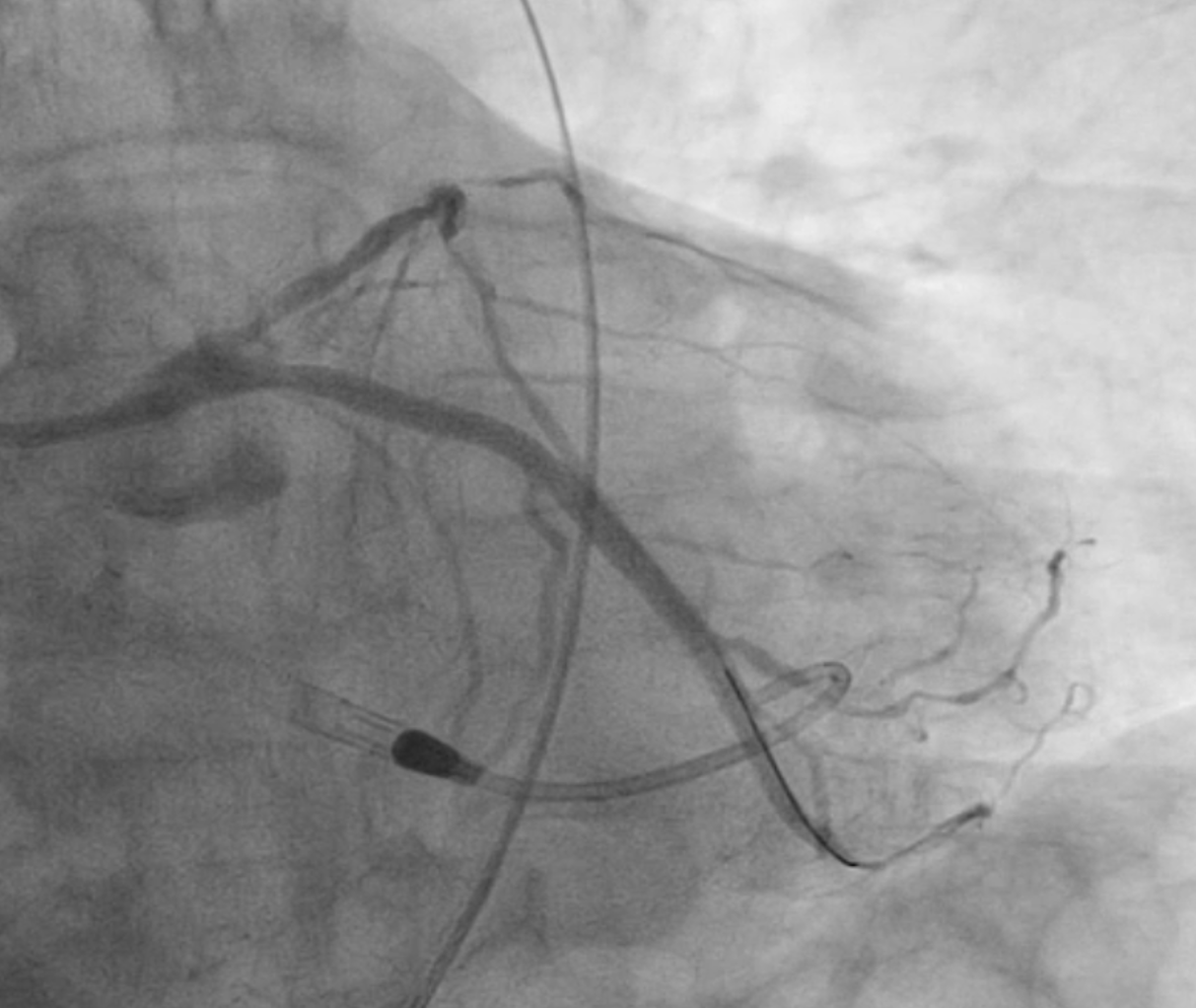63 years old gentleman with poor control on diabetes, hypertension, hyperlipidemia, and chronic kidney disease, admitted to hospital because of acute pulmonary edema. He was intubated and transferred to our unit.
Chest X ray showed congestion of lungs. Electrocardiogram showed poor R wave progression and tall T wave in anterior leads. Blood test showed raised creatinine and cardiac enzymes. Echocardiogram showed global hypokinesia and left ventricular ejection fraction less than 35%.
After good diuresis, he was stabilized and underwent diagnostic coronary angiogram.

